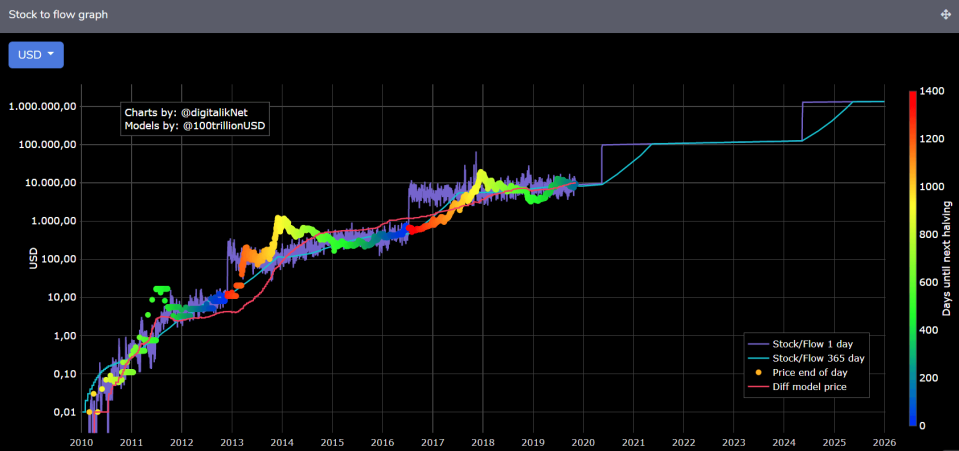What causes a Bitcoin bubble?
Bitcoin bubbles generally tend to grow after a fresh wave of new users join the market.
The first registered Bitcoin bubble popped in 2011. This was then followed by a second bubble in late 2013. After that bubble burst, the market had to wait over four years before the biggest Bitcoin bubble of them all exploded spectacularly.
In December 2017, Bitcoin reached $20,000 – a record price in the history of any cryptocurrency. But once the bubble burst, the digital asset came crashing down to lows of $3,150.
Given that Bitcoin’s price is currently around 50% of its all-time high, will we ever see another massive run?
Let’s take a look at what causes a Bitcoin bubble and whether it’s possible to predict one.
Bitcoin price history

Looking at the chart above, you can see how Bitcoin’s price bottomed at around $3,150.
Price action, in terms of US dollars, has been showing bullish signals recently as the EMAs are once more starting to diverge and point upwards. The same signal appeared between April and September 2019. During this period, BTC climbed around 180% from about $5,000 to nearly $14,000.
Not only that, but looking at the volume profile, you can see that volume is building up and creating a safety net below $9,000. This means, in terms of probabilities, there’s a higher chance of price breaking above $9,000 than below.
Moreover, not only has volume grown 550% since January 2019, it has also reached over $44 billion twice during the same period.
Bitcoin is gaining new whales
Since early 2019, Bitcoin seems to have gained new strength as new investors have started pouring into the market.
Number of #Bitcoin addresses holding more than 1000 $BTC 👀 pic.twitter.com/SGdBXrob5e
— glassnode (@glassnode) October 11, 2019
Although one can never be sure if different addresses belong to different people, I’m going to assume there aren’t many people or businesses that own over 1,000 Bitcoin in one single address.
In that case, the above chart should shock you.
It shows that the number of addresses with over 1,000 Bitcoin, which at the current price represents a whopping $9,300,000, has grown substantially.
From late 2019 to today, about 600 addresses with over 1,000 BTC were created – or funded to be precise.
Should we assume institutional investors and VCs are betting heavy on the king of cryptocurrencies?
I suspect so.
Is a Bitcoin bubble on the horizon?

If the first ingredient of a Bitcoin bubble is new players, the second is the sudden reduction in supply.
This event is usually referred to as the “Bitcoin halving”, and it represents the date at which Bitcoin’s block rewards are halved.
Around May 2020, Bitcoin miners will start to receive 6.25 BTC per block mined rather than the current 12.5 BTC.
If today about 1,800 BTC are mined per day, after the supply cut, we should see around 900 BTC being mined on average each day.
What will happen to Bitcoin’s price in USD terms? Even though I cannot foresee the future, I imagine there will be extra pressure for price to rise. After all, miners’ profits will be cut in half.
According to the graph above, courtesy of @100trillionUSD, a few months after each halving event, BTC’s price action has gone through the roof.
At the same time, past history doesn’t dictate future price, so the same “expected” bull run might not take place.
In conclusion, Bitcoin bubbles are formed when there’s new people coming into the market, which is driven by miners selling at higher prices to maintain profits.
The post What causes a Bitcoin bubble? appeared first on Coin Rivet.

 Yahoo Finance
Yahoo Finance 